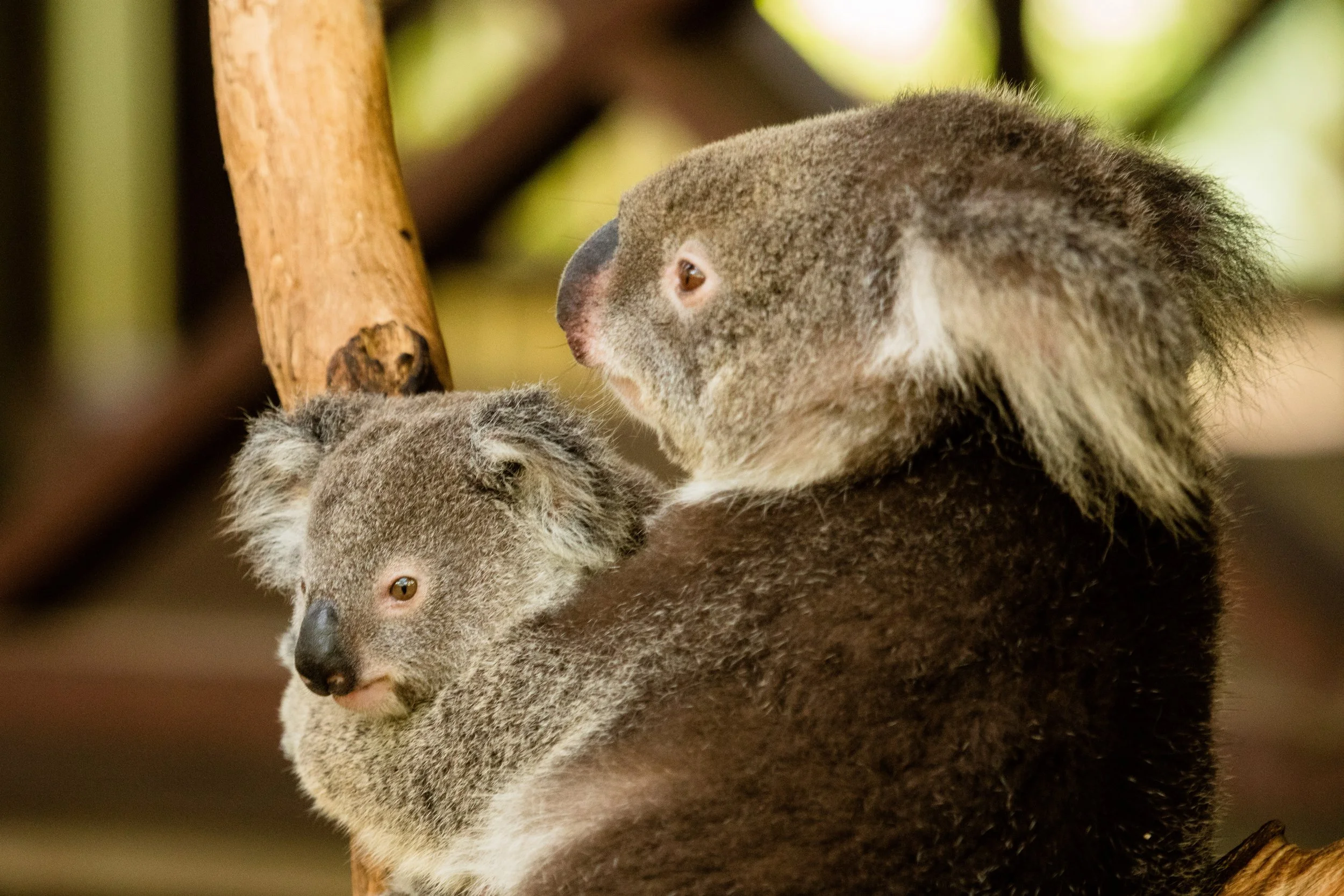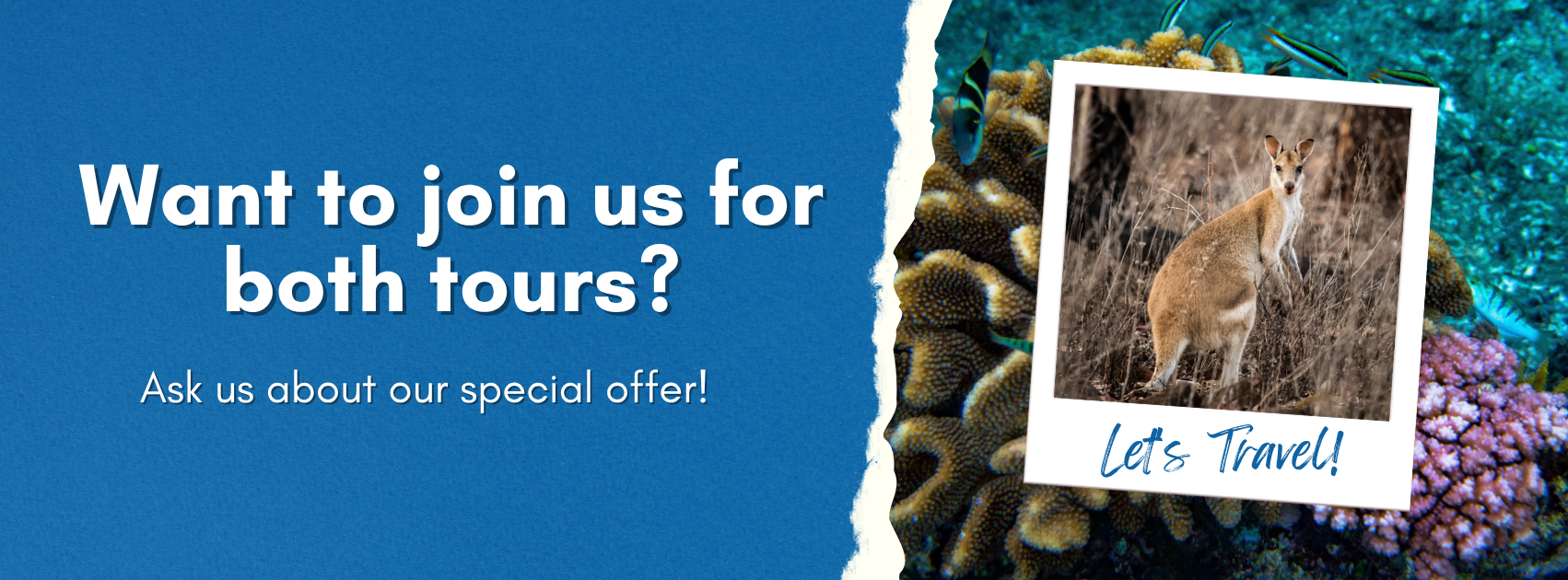Welcome!
Thank you for registering for the 2026 Australia Conservation Storytelling Bootcamp Tour Info ! We are so excited to have you join Stephanie Arne and me, Jennifer Leigh Warner in Australia. Below are details of the tour.
Please fill out this important contact information, so we can get you all set up for your tour.
Final Bill
$300 deposit due at time of booking. Full refund 6 months before departure, Full amount due 4 months ahead of time, July 10th, 2026. A final bill will be emailed to you 6 months before departure. If you would like to pay your bill before then, please contact us at jennifer@experiencewildlife.com
Tour Details
Highlights
Hands-on photo instruction for wildlife conservation photography with Nikon Professional Jennifer Leigh Warner
Hands-on instruction from Stephanie Arne, an accomplished international wildlife conservationist, expedition guide, TV personality, and a spirited and engaging storyteller.
Guest instruction from Luke Reavley, Editor-in-Chief of Crikey! Magazine for the Australia Zoo and Tim Davison, conservation filmmaker and producer.
Work with the Wildlife Warriors Rescue Team to learn how to tell a conservation story.
Select images taken during our time with the Wildlife Warriors team will be published in Crikey! Magazine in their Australia Zoo Wildlife Hospital feature.
Stay at The Crocodile Hunter Lodge, a luxury accommodation surrounded by wilderness and native fauna, helping guests reconnect with the natural world.
-
Day 1 - Arrive in Brisbane, Australia in the morning of November 10th. After going through customs you will be met by Jennifer and Stephanie and transfer to the town of Beerwah via train. Once we have all arrived in Beerwah we will be shuttled to Australia Zoo.
After checking into our cabins you will be given some time to rest and unpack from your long journey.
We will meet for a welcome dinner at the Warrior Restaurant & Bar.
Day 2 - After breakfast we will begin our day with a tour of Australia Zoo.
After lunch and a short break we will meet for presentations from Stephanie and Jennifer about what makes a good visual story. We will discuss how we are going to spend the week creating a photo story.
Day 3 - After breakfast we will begin our day with a tour of Australia Zoo clinic and start working on a photo story.
After lunch we will have a presentation from Luke Reavley, Editor-in-Chief of Crikey! Magazine on what an editor is looking for when creating a photo story for publication.
Day 4 - After breakfast we will head into the field with the Wildlife Warriors Rescue Team to photograph conservation work in action. Depending on what is happening in the field will determine what we will be photographing.
After we get back you will have the afternoon to explore the zoo and work on your photo story.
Day 5 - After breakfast we will spend the day at the zoo and vet clinic working on conservation story. Throughout the day Jennifer and Stephanie will do one on one portfolio reviews. Afternoon presentation from filmmaker Tim Davison.
Day 6 - Steve Irwin Day This will be our last full day to work on conservation photo story and photograph the events happening at the zoo for Steve Irwin Day.
We will meet for a final dinner and have a presentation where we will share the “best of images” made during the week.
Day 7 - Check out of cabins and return home or continue onto an extension trip to Northern Queensland.
-
Two camera bodies to limit lens changes
Telephoto lens – 400 mm or larger (for wildlife)
Mid range variable – 24-100mm (for environmental and people images)
Tripod for extra support or help with creative images
Camera sling/harness/strap of some sort to secure it to your person while not in a pack
Plenty of batteries and memory cards
Laptop or other system for backing up images
You need both a plug adapter and a voltage converter if your home country uses a different electrical system than Australia, which runs on 230V at 50Hz. A plug adapter changes the pin configuration to fit the Type I Australian socket, while a voltage converter steps the voltage down to prevent damage to your devices. However, if your device is dual-voltage (e.g., labeled 100-240V), it will only need a plug adapter.ription text goes here
-
Layers, including a long sleeve quick dry top to keep you safe from the sun.
Brimmed hat
Waterproof hiking boots.
Thick socks
Sunglasses
Sunscreen
Personal water bottle
Australian currency
Any medication you may need
-
In November, Australia's weather transitions from spring to a warm start to summer, with pleasant and sunny conditions in the south, while the tropical north becomes hot, humid, and experiences the beginning of the wet season. Southern cities like Sydney and Melbourne will see warm days, while the Outback can get very hot, and parts of the tropical north will be humid with rain, and it's stinger season in the Whitsundays and Great Barrier Reef area.



